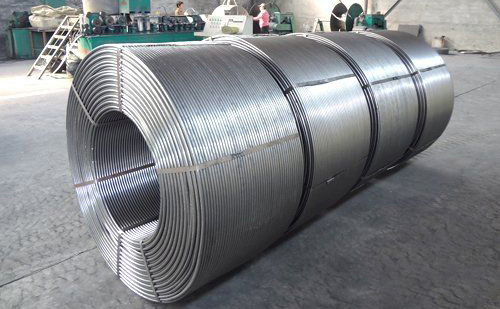
There are different types of cored wire. These include Metallurgical wire, Calcium-iron wire, and Calcium-silicon wire. Each has different properties and advantages and the specifications can be customized to meet specific requirements. These wires are commonly used in automotive applications. You can find a variety of cored wires at the local home improvement center.

Metallurgical cored wires are available in a variety of diameters and specifications. They are available in nine-millimeter, thirteen-millimeter, and sixteen-millimeter diameters, as well as five-millimeter diameter wires. They are supplied on steel frame pallets with moisture-proof film. It is important to keep them dry and store them correctly.
The outer casing is made of 0.4 mm thick, while the cored wire filling is made of calcium and iron powders in a ratio of 30:70. The mixture weighs 275 grams per meter. The wires are then processed to produce metal pieces. These products are used in a variety of industries, including automobiles, appliances, and electrical wiring.
The magnesium content in the iron melt should be above the limit value when the last part of the wire is cast. The magnesium content in the cored wire can also be increased by adding 6% barium to the intermediate layer, which extends the life of the treated wire.
Calcium-iron cored wire is a type of alloy steel made from calcium and iron. It is composed of 62-66 percent calcium powder and 16-20 percent sintered refined slag. The two components are mixed and the finished wire is inserted into the molten steel with a wire feeder. This method increases alloy yield and increases castability while lowering the cost of steel making.
Calcium-iron cored wire has a wide range of applications. Besides casting iron, it is also used for other processes such as desulfurization, spheroidization, creeping treatment, and inoculation. Its composition standard is different depending on the process. It is also essential to note that the rate of calcium absorption in a cored wire depends on the feeding speed. In general, the slower the feeding speed, the greater the absorption rate. In addition, the wire starts to melt at a certain depth. This depth should be high enough that the calcium bubbles are subjected to high hydrostatic pressure before floating to molten steel.
Calcium-iron cored wire can be made with the help of iron powder. Domestic steel producers use it for calcium treatment of low carbon steel and ultra-low carbon steel. Its high purity and low-silicon content make it suitable for demanding requirements.
Calcium silicon cored wire is an important material used in the production of cast iron and steel. It is used in various processes, such as desulfurization, spheroidization, creeping treatment, and inoculation. The quality of the wire depends on its composition, and the standards used in different processes are different as well.
Calcium silicon cored wire has many advantages, including ease of use, small space and investment, and low processing cost. Its use in the steelmaking process can improve the castability and performance of the steel, and it helps reduce alloy consumption. It can also control the shape of inclusions. The advantages of calcium silicon cored wire make it an excellent material for steelmaking.
Calcium silicon cored wire is composed of two main materials: calcium and silicon. The first one contains calcium, while the other two contain silicon. The former has better tensile strength and toughness. It is also easier to feed, with a more consistent diameter.

Write a Message